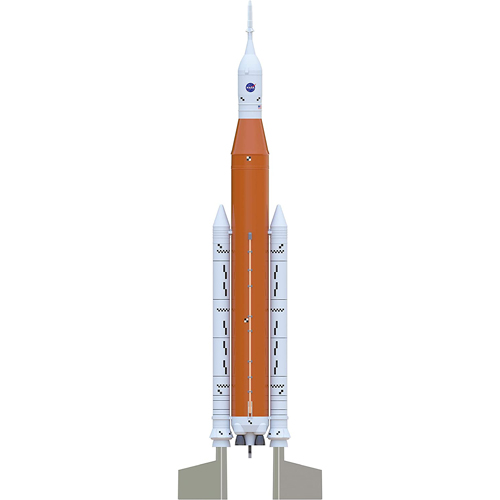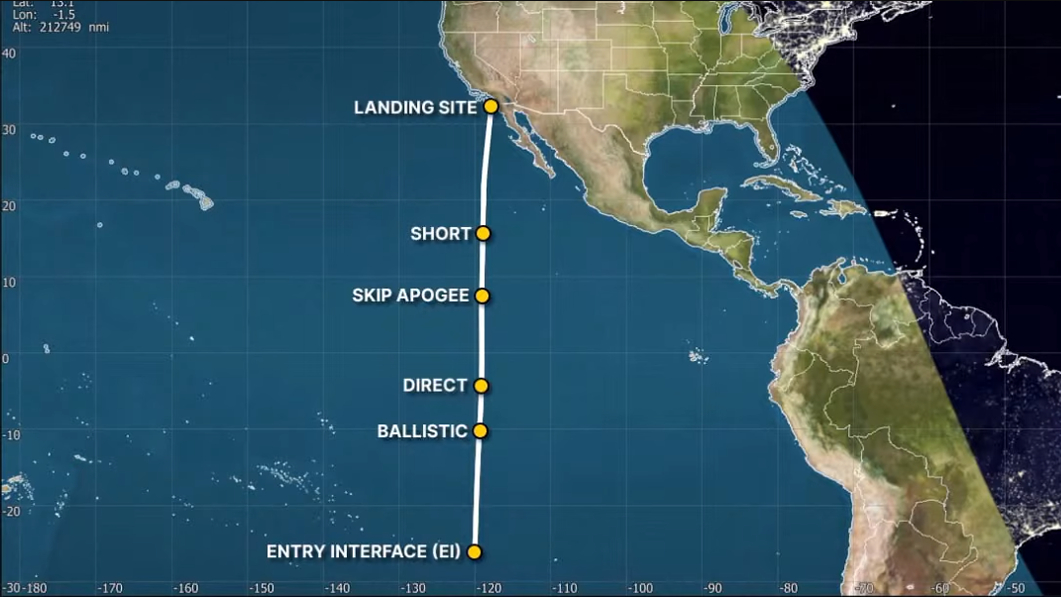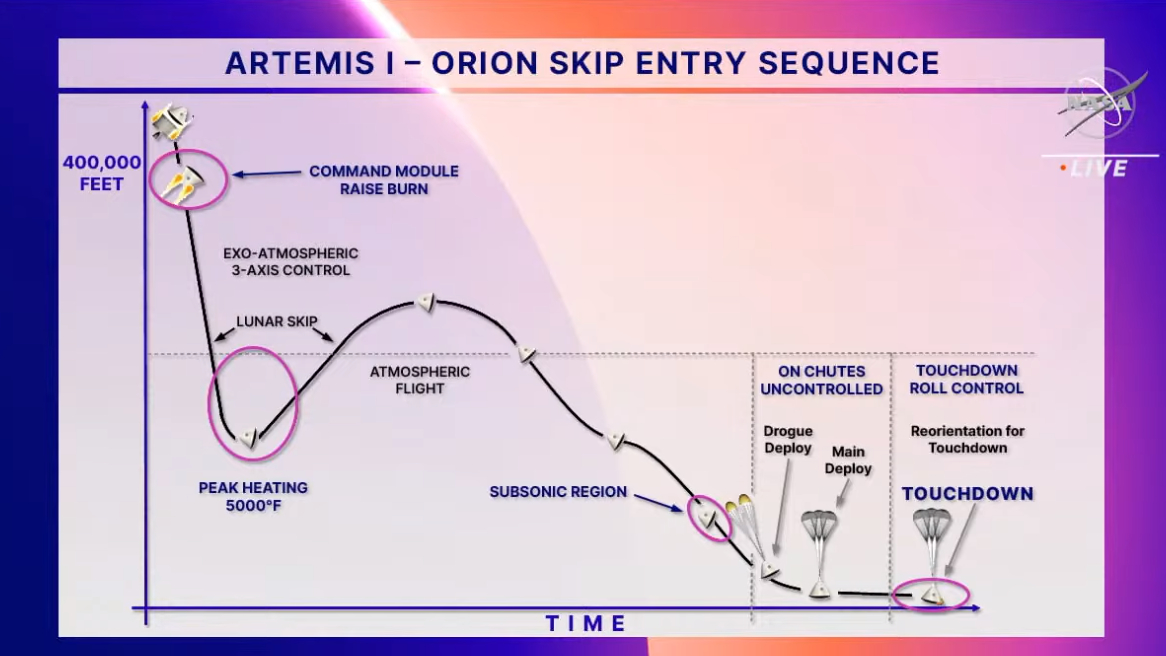What time does the Artemis 1 Orion spacecraft splash down on Dec. 11 to end NASA's moon mission?
NASA's Artemis 1 Orion spacecraft will end a 26-day mission to the moon on Sunday. Here's when it happens.
Update for Dec. 11, 12:50 pm ET: NASA's Artemis 1 Orion spacecraft successfully splashed down today, Dec. 11, and appears in good shape as recovery teams work to retrieve the spacecraft. NASA will wait about 2 hours to retrieve Orion from the ocean as part of a post-landing temperature test.
The end is in sight for NASA's historic Artemis 1 mission to the moon, which will return its Orion spacecraft to Earth on Sunday (Dec. 11) with a splashdown in the Pacific Ocean.
If you're hoping to follow along with the Orion spacecraft splashdown, you'll need to know what time it is and the events that have to go right for it to return home successfully. But don't fret, we've got you covered for all your Artemis 1 mission needs.
The Artemis 1 Orion is scheduled to splash down in the Pacific on Sunday off the western coast of Baja California at 12:40 p.m. EST (1740 GMT) to wrap a 26-day mission that began with a predawn launch on Nov. 16. You can watch the Artemis Orion splashdown live online for free via a NASA TV livestream that will begin at 11 a.m. EST (1600 GMT).
Related: How NASA's Artemis 1 Orion spacecraft will splash down in 8 steps
More: NASA's Artemis 1 moon mission: Live updates

You can launch an Artemis 1 Space Launch System of your own with this Estes NASA SLS model rocket for a 1:200 scale version of NASA's moon megarocket. Read more about it.
The uncrewed Artemis 1 Orion mission is NASA's first test flight of the rocket and spacecraft it will use to return astronauts to the moon's surface by 2025 under the agency's Artemis program. During reentry, Orion will face its most critical challenge yet: to survive the searing hot temperatures as it barrels through Earth's atmosphere and deploy its parachutes for a safe splashdown.
"We have some hard stuff ahead of us," NASA's Artemis 1 mission manager Mike Sarafin said in a press conference Thursday (Dec. 8).
Get the Space.com Newsletter
Breaking space news, the latest updates on rocket launches, skywatching events and more!
Orion's descent operations begin at 12 p.m. EST (1700 GMT), when the crew capsule is scheduled to separate from its service module, which was built by the European Space Agency and contains the solar arrays, engine and propellant used to get to the the moon and back. The service module is no longer needed and will be jettisoned in a way so it poses no hazard to Orion or people on the ground, NASA has said.


At 12:20 p.m. EST (1720 GMT), Orion's crew module will begin its plunge through Earth's atmosphere, according to a NASA mission timeline. Orion will slam into Earth's atmosphere at a whopping 25,000 mph (40,000 kph), about 32 times the speed of sound. It should experience temperatures of up to 5,000 degrees Fahrenheit (2,800 degrees Celsius), which is about half as hot as the sun.
To slow the spacecraft and keep it on target, NASA will test a novel "skipping" reentry technique in which Orion will bounce of Earth's atmosphere like a skipping stone after its first atmospheric entry. The spacecraft will then make a second atmospheric entry to continue its final descent.
By 12:35 p.m. EST (1735 GMT), Orion should be at an altitude of about 40,000 feet (nearly 12,200 meters), at which time a lot of things will happen in quick succession. Within a span of four minutes, the spacecraft will deploy a series of parachutes to slow its descent even more. Under its main parachutes, Orion is expected to splash down at a speed of about 20 mph when it hits the water at 12:40 p.m. EST, NASA has said.
"When we splash down, we will actually be in the water for about two hours," Judd Frieling, NASA's Artemis 1 flight director, said Thursday. That time period will allow NASA to test the Orion's condition and its temperatures after splashdown. If everything runs on schedule, Orion should be aboard its recovery ship by 3 p.m. EST (2000 GMT).
| Event | EST | PST | GMT | Header Cell - Column 4 |
|---|---|---|---|---|
| NASA TV coverage begins | 11 a.m. | 8 a.m. | 1600 | Row 0 - Cell 4 |
| Crew module separation | 12 p.m. EST | 9 a.m. | 1700 | Row 1 - Cell 4 |
| Crew module entry interface | 12:20 p.m. | 9:20 a.m. | 1720 | Row 2 - Cell 4 |
| Altitude 40,000 feet | 12:35:28 p.m. | 9:35:28 a.m | 1735:28 | Row 3 - Cell 4 |
| Forward bay cover chute deploy | 12:36:02 p.m. | 9:36:02 a.m. | 1736:02 | Row 4 - Cell 4 |
| FBC chute jettison | 12:36:04 p.m. | 9:36:04 a.m. | 1736:04 | Row 5 - Cell 4 |
| Drogue chute deploy | 12:36:06 p.m. | 9:36:06 a.m. | 1736:06 | Row 6 - Cell 4 |
| Main parachute deploy | 12:37:26 p.m. | 9:37:26 a.m. | 1737:26 | Row 7 - Cell 4 |
| Drogue chute jettison | 12:37:26 p.m. | 9:37:26 a.m. | 1737:26 | Row 8 - Cell 4 |
| Splashdown | 12:40 p.m. | 9:40 a.m. | 1740 | Row 9 - Cell 4 |
| Orion on recovery ship | 3 p.m. | 12 p.m. | 2000 | Row 10 - Cell 4 |
| Post splashdown conference | 3:30 p.m. | 12:30 p.m. | 2030 | Row 11 - Cell 4 |
| Artemis 1 mission highlights | 6 p.m. | 3 p.m. | 2300 | Row 12 - Cell 4 |
NASA is working with the U.S. Navy to recover the Orion spacecraft from the Pacific Ocean. The Navy's USS Portland is on site to retrieve Orion and Navy and NASA divers have been rehearsing recovery plans for weeks, said Melissa Jones, NASA's landing and recovery director.
Once Orion is back on Earth, NASA has two more Artemis 1 mission events you may want to watch to close out the mission.
At 3:30 p.m. EST (2030 GMT), NASA will hold a post-splashdown press conference to discuss Orion's return to Earth and the mission overall. That briefing will be webcast live on NASA TV and feature comments from NASA chief Bill Nelson and Artemis 1 mission managers. Then, at 6 p.m. EST (2300 GMT), NASA will webcast its final Artemis 1 mission highlights video to celebrate the mission.
And that's what time NASA's Artemis 1 Orion spacecraft will splashdown to end its trip to the moon.
NASA will study the Artemis 1 Orion to see how well its systems performed during the 26-day moon flight. If all goes well, NASA aims to launch the first crewed mission on Orion, the Artemis 2 mission, in 2024 to send astronauts on a trip around the moon. Artemis 3, the first crewed moon landing mission with Orion and a SpaceX Starship lander, is scheduled for no earlier than 2025.
Email Tariq Malik at tmalik@space.com or follow him @tariqjmalik. Follow us @Spacedotcom, Facebook and Instagram.
Join our Space Forums to keep talking space on the latest missions, night sky and more! And if you have a news tip, correction or comment, let us know at: community@space.com.

Tariq is the Editor-in-Chief of Space.com and joined the team in 2001, first as an intern and staff writer, and later as an editor. He covers human spaceflight, exploration and space science, as well as skywatching and entertainment. He became Space.com's Managing Editor in 2009 and Editor-in-Chief in 2019. Before joining Space.com, Tariq was a staff reporter for The Los Angeles Times covering education and city beats in La Habra, Fullerton and Huntington Beach. In October 2022, Tariq received the Harry Kolcum Award for excellence in space reporting from the National Space Club Florida Committee. He is also an Eagle Scout (yes, he has the Space Exploration merit badge) and went to Space Camp four times as a kid and a fifth time as an adult. He has journalism degrees from the University of Southern California and New York University. You can find Tariq at Space.com and as the co-host to the This Week In Space podcast with space historian Rod Pyle on the TWiT network. To see his latest project, you can follow Tariq on Twitter @tariqjmalik.
-
odubya23 Please stand by for an incredibly unpopular opinion.Reply
I think that manned spaceflight is a titanic waste of resources that could be better allocated to much more pressing issues our nation and our planet faces. I believe that this new moon rush is a direct response to a perceived concern that the Chinese Space Program might have real interest in exploiting Lunar resources.
Everything we could want to do on the moon could be done for a fraction of the cost and risk to human life with automation.
I will respond to serious rebuttals and ignore flame from Sci-fi enthusiasts and surviving members of the population that remembers watching Apollo live on TV.
Thank you for your kind attention. -
billslugg It's "crewed" not "manned".Reply
Without crewed spaceflight, there would have been no way to repair and upgrade Hubble the five times we did.
Robots cannot do experimentation or repairs in space as well as humans.
Robots should always be the first wave of exploration in space at each step, LEO, Moon, Mars, etc but eventually humans will have to follow to do the high end work. -
odubya23 Replybillslugg said:It's "crewed" not "manned".
I thank you for the English lesson.
It is remarkable that NASA was able to repair Hubble. As I look at images like "The Pillars of Creation" and "The Hubble Deep Field Exposure", it is easier for me to not look at the more than half million homeless Americans, many of them Veterans, too many of them children.
As we quibble about terminology, we are pleasantly distracted from 4.5 metric tons per person per year that will soon make many regions of our homeworld uninhabitable.
It is extremely difficult for me to see how not diverting funds and efforts to find solutions for terrestrial problems and instead spend an extra few thousand dollars in extra mass for life support equipment is justified. -
billslugg Space travel by humans is a necessity to conduct the experiments that will be needed to solve the problems of the world.Reply
It is not an 'either/or' question. There is plenty of money available to solve the world's problems because money is not the problem. The problem is human stupidity, greed and corruption. No amount of money fixes them.
Look at the Horn of Africa. They have been there 300,000 years since homo sapiens became a distinct species, watched us go to the Moon and yet they cannot figure out how to establish a stable society or provide clean drinking water for their children.
That's what I think about shoveling money into the world's problem areas. -
odubya23 Replybillslugg said:Look at the Horn of Africa. They have been there 300,000 years since homo sapiens became a distinct species, watched us go to the Moon and yet they cannot figure out how to establish a stable society or provide clean drinking water for their children.
That's what I think about shoveling money into the world's problem areas.
That is precisely the attitude that I was hoping to address. Space exploration and development should be for the good of all human kind. Until I can be convinced of that, it's just the new imperialism.
Your callous dismissal of terrestrial problems, especially African ones, a particularly disturbing example, is why such problems persist.
It's depressing, really. -
billslugg But our space exploration is for the good of all humankind. We freely share our learnings with other countries. The ISS is a consortium of 15 countries, people of 19 nationalities have flown on it.Reply
I don't dismiss the Horn of Africa it is a problem, I dismiss that money diverted from space exploration will solve it.









